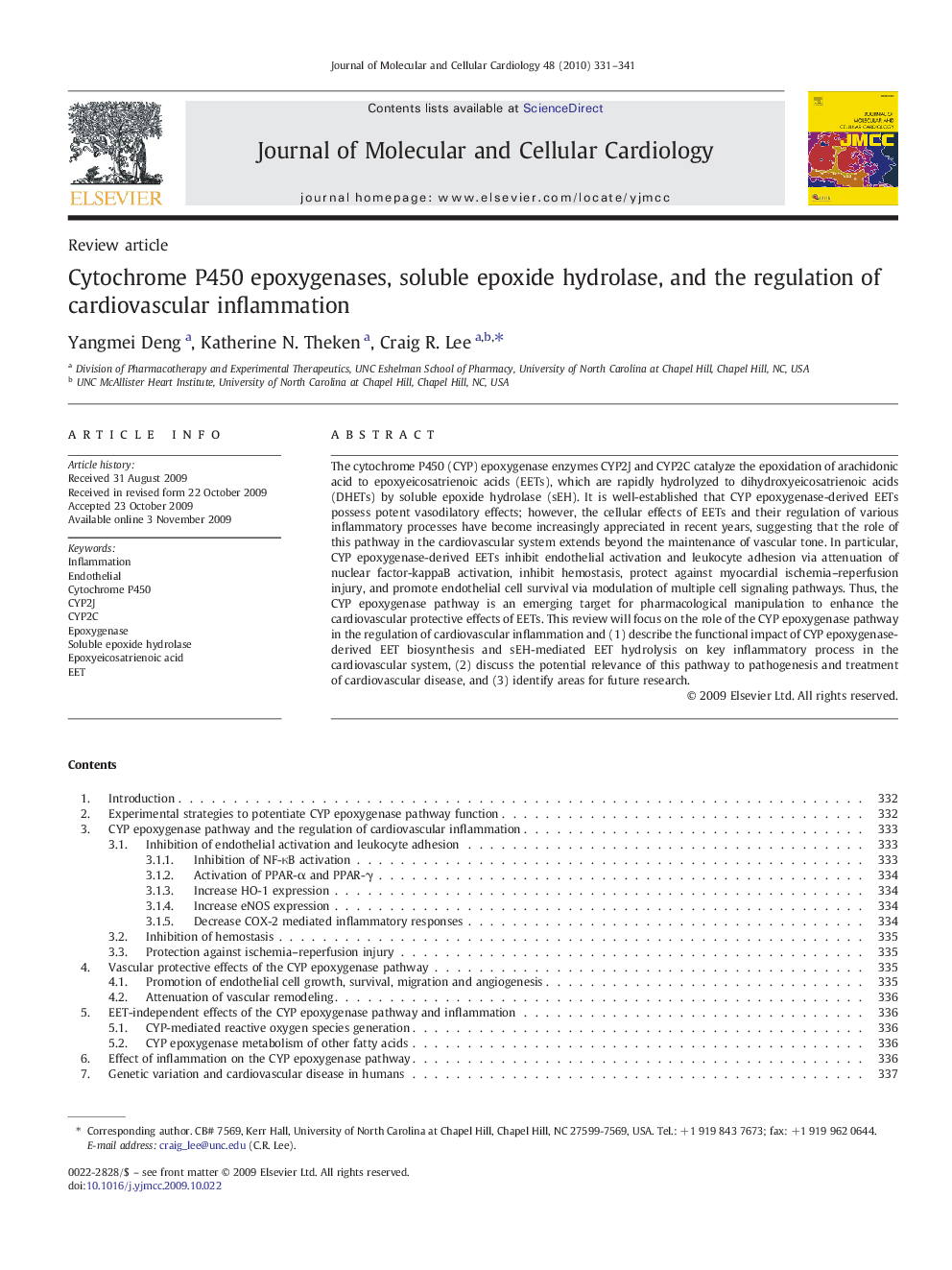| Article ID | Journal | Published Year | Pages | File Type |
|---|---|---|---|---|
| 2191040 | Journal of Molecular and Cellular Cardiology | 2010 | 11 Pages |
The cytochrome P450 (CYP) epoxygenase enzymes CYP2J and CYP2C catalyze the epoxidation of arachidonic acid to epoxyeicosatrienoic acids (EETs), which are rapidly hydrolyzed to dihydroxyeicosatrienoic acids (DHETs) by soluble epoxide hydrolase (sEH). It is well-established that CYP epoxygenase-derived EETs possess potent vasodilatory effects; however, the cellular effects of EETs and their regulation of various inflammatory processes have become increasingly appreciated in recent years, suggesting that the role of this pathway in the cardiovascular system extends beyond the maintenance of vascular tone. In particular, CYP epoxygenase-derived EETs inhibit endothelial activation and leukocyte adhesion via attenuation of nuclear factor-kappaB activation, inhibit hemostasis, protect against myocardial ischemia–reperfusion injury, and promote endothelial cell survival via modulation of multiple cell signaling pathways. Thus, the CYP epoxygenase pathway is an emerging target for pharmacological manipulation to enhance the cardiovascular protective effects of EETs. This review will focus on the role of the CYP epoxygenase pathway in the regulation of cardiovascular inflammation and (1) describe the functional impact of CYP epoxygenase-derived EET biosynthesis and sEH-mediated EET hydrolysis on key inflammatory process in the cardiovascular system, (2) discuss the potential relevance of this pathway to pathogenesis and treatment of cardiovascular disease, and (3) identify areas for future research.
